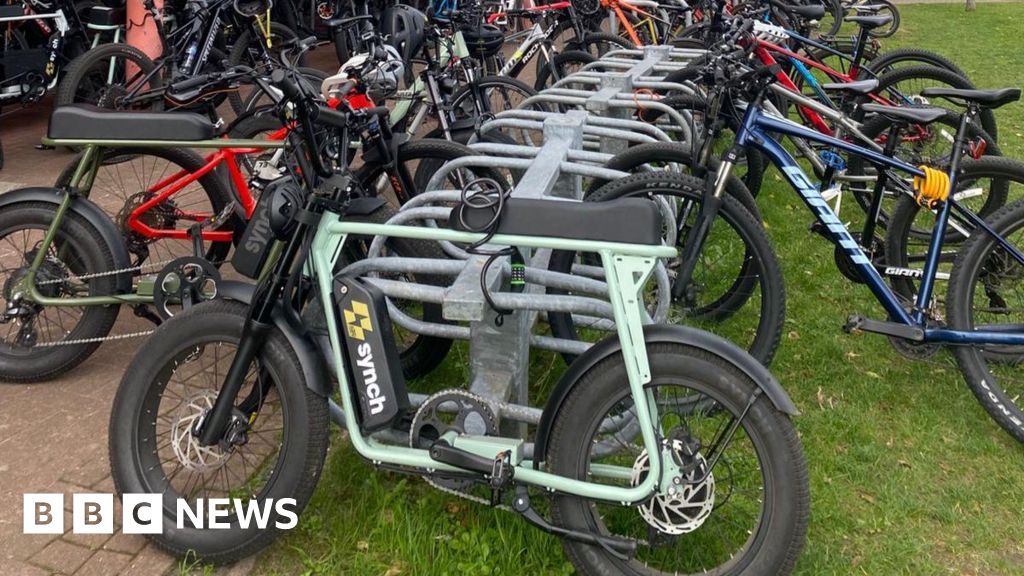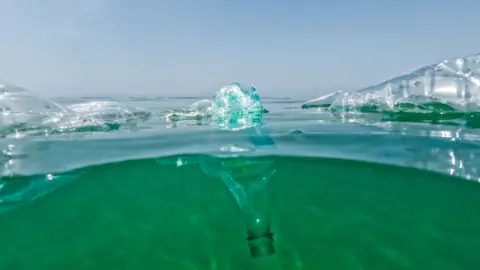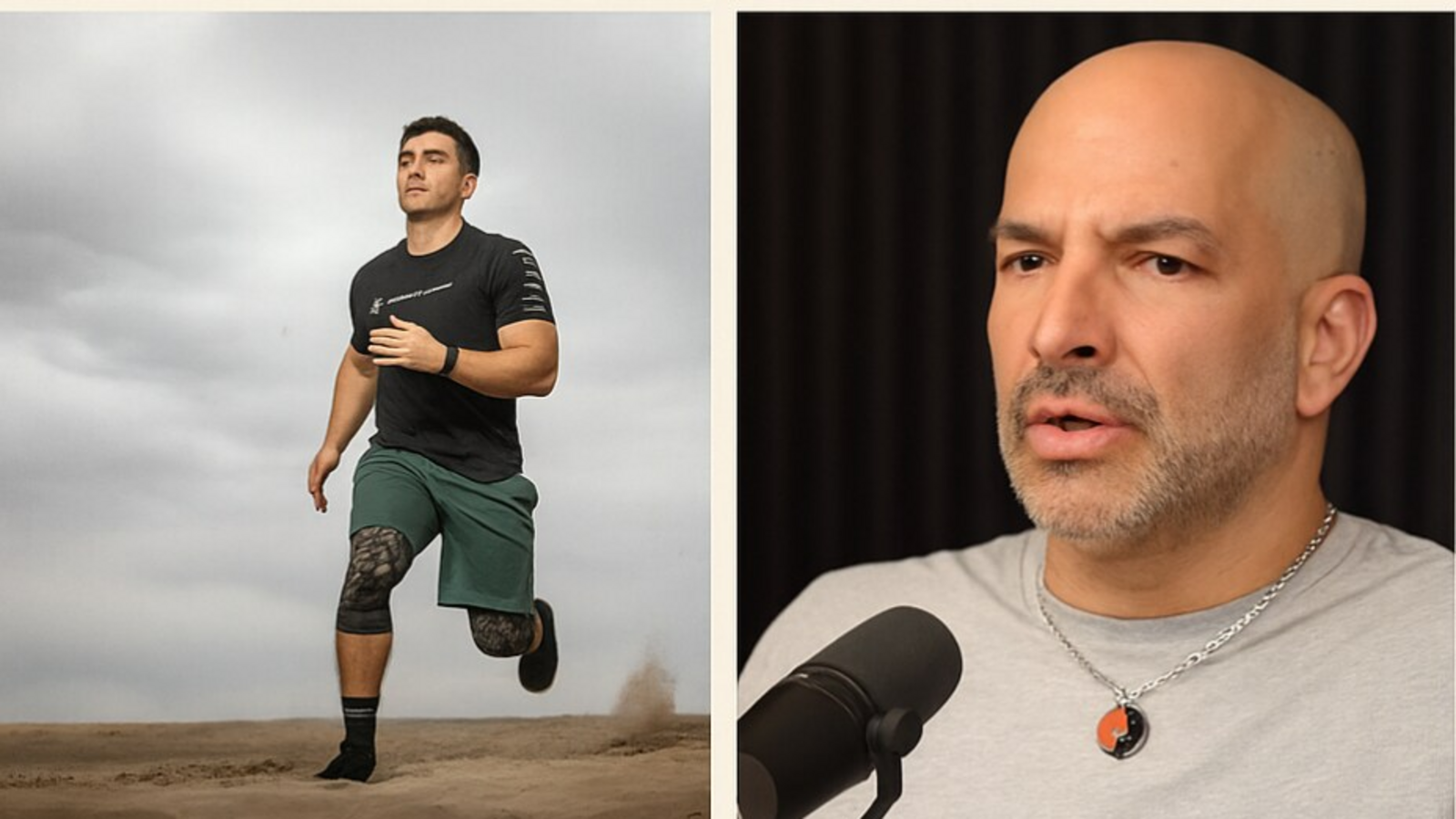Quantum oscillations are like the rhythmic dance of electrons in a metal when exposed to a magnetic field. By applying a magnetic field, researchers can change the speed with which those electron springs wiggle.
But here’s the twist: these…

Quantum oscillations are like the rhythmic dance of electrons in a metal when exposed to a magnetic field. By applying a magnetic field, researchers can change the speed with which those electron springs wiggle.
But here’s the twist: these…

The animated TV series, “Avatar: The Last Airbender,” lands at Popejoy Hall as a two hour live orchestral performance, bringing the show’s musical score on stage for the show’s…

More children are walking and cycling to school in Guernsey, according to the Health Improvement Commission.
Its Active Travel Audit, introduced in 2020, measures how many people travel by walking, cycling, scooting and blended travel – using a…

Ethan GudgeSouth of England
 Getty Images
Getty ImagesPlastic pollution in the ocean could remain on the water’s surface for more than a century, a new study has found.
Scientists from HR…

Is it better to exercise intensely once in a while or a little every day? Experts have long agreed that making daily movement a habit, even if it’s light, leads to better health. Longevity expert Dr Peter Attia also supports this approach.

CAIRO – The
ceasefire in Gaza
has eased the trauma of Israel’s air strikes and blockade, but a shortage of cash has left Palestinians unable to spend what little money they have without falling victim to wartime profiteers.
Banks, many damaged or destroyed along with homes, schools and other institutions across Gaza during two years of war, began reopening on Oct 16, six days after the ceasefire was announced. Queues soon formed, but people came away disappointed.
“There is no money, liquidity at the bank,” said father-of-six Wael Abu Fares, 61, standing outside the Bank of Palestine. “You just come and do paperwork transactions and leave.”
People need cash for most everyday transactions in Gaza, whether to buy food in the market or pay utility bills, but Israel blocked transfers of banknotes, along with most other goods, following the attack and mass
hostage-taking by Hamas-led militants in October 2023
.
“Banks are open, air-conditioning is on, but they are doing mostly electronic business – no deposits, no withdrawals of cash,” Gaza economist Mohammad Abu Jayyab told Reuters.
“People go to some greedy merchants to cash their salaries and they give them cash for a huge fee, which ranges between 20 per cent and sometimes goes to 40 per cent.”
Mother-of-seven Iman al-Ja’bari longed for a time when transactions at banks used to take less than an hour.
“You need two or three days to go back and forth, back and forth, spending your whole life standing there,” she said. “And in the end, you only get 400 shekels (S$160) or 500 shekels. What can this (amount) buy with the incredibly high prices today that we can’t afford?”
For a few Palestinians, the cash crunch has provided an opportunity to eke out a living. Ms Manal al-Saidi, 40, repairs damaged banknotes to cover some basic needs.
“I work and I make 20, 30 shekels, and I leave with a loaf of bread, beans for dinner, falafel, anything, something simple,” she said, wiping notes.
“Not that I can get (afford) vegetables or anything, no, just enough to get by.”
Some people resort to electronic transfers through bank apps for even small items such as eggs or sugar, but sellers apply additional fees.
The issue of cash supplies into Gaza was not included in
US President Donald Trump’s 20-point peace plan
, which also left the details of reconstruction and security to be decided.
Cogat, the arm of the Israeli military that oversees aid flows into the Gaza Strip, did not immediately respond to a request for comment on whether or when banknotes may be allowed back in.
The shortage of notes and coins has compounded the crisis for Gazans who have lost relatives, jobs and homes, used up their savings and sold their possessions to buy food, tents and medications. Some have resorted to barter to get by.
Palestinian merchant Samir Namrouti, 53, has become used to banknotes that are almost unrecognisable through overuse.
“What matters to me is its serial number. As long as its serial number is there, that’s it, I treat it as money,” he said. REUTERS

KARACHI: The 39-day World Culture Festival 2025 began on a vibrant note at the Arts Council of Pakistan in Karachi on Friday, marking the start of one of South Asia’s largest cultural gatherings that brings together…

Leading Global Automaker to Deploy NVIDIA Blackwell AI Infrastructure Across Manufacturing, Robotics and Autonomous Driving
News Summary:
APEC Summit—NVIDIA today announced it is deepening its collaboration with Hyundai Motor Group to accelerate innovation in autonomous vehicles (AVs), smart factories and robotics with a new NVIDIA Blackwell-powered AI factory.
Building on their strategic collaboration, Hyundai Motor Group and NVIDIA are now entering a new phase of collaboration, shifting from strategic adoption of advanced software platforms and infrastructure to joint innovation of core physical AI technologies. Together, they will codevelop AI capabilities for mobility solutions, a next-generation smart factory and on-device semiconductor advancements to strengthen Hyundai Motor Group’s future capabilities.
As part of this endeavor, Hyundai Motor Group and NVIDIA aim to enable integrated AI model training, validation and deployment using 50,000 NVIDIA Blackwell GPUs.
In addition, in support of the Korean government’s initiative to build a national physical AI cluster, Hyundai Motor Group and NVIDIA will work closely with government stakeholders to accelerate ecosystem development. This will result in an approximately $3 billion investment to advance the physical AI landscape in Korea.
Key efforts include the establishment of an NVIDIA AI Technology Center, Hyundai Motor Group’s Physical AI Application Center and regional data centers. This will also foster dynamic exchanges with NVIDIA’s engineers and technicians, helping cultivate Korea’s next generation of physical AI talent.
“AI is revolutionizing every facet of every industry, and in transportation alone — from vehicle design and manufacturing to robotics and autonomous driving — NVIDIA’s AI and computing platforms are transforming how the world moves,” said Jensen Huang, founder and CEO of NVIDIA. “Together with Hyundai Motor Group — Korea’s industrial powerhouse and one of the world’s top mobility solutions providers — we’re building intelligent cars and factories that will shape the future of the multitrillion-dollar mobility industry.”
“As we enter a new era of AI-powered mobility and smart factories, deepening our collaboration with NVIDIA marks a pivotal step forward,” said Euisun Chung, executive chair of Hyundai Motor Group. “Together, we are not only building advanced technologies but also laying the foundation for a robust AI ecosystem in Korea — one that fosters innovation, nurtures talent and positions us at the forefront of global AI leadership.”
“For Korea to leap forward as a leading nation in AI, the advancement of physical AI is essential — a key initiative championed by the Ministry of Science and ICT. This inaugural step in public-private collaboration to foster physical AI is therefore incredibly significant,” said Bae Kyung-hoon, Deputy Prime Minister, and Minister of Science and ICT of the Republic of Korea. “Korea has a strong foundation in manufacturing. By combining Korea’s rich manufacturing data with NVIDIA’s cutting-edge AI infrastructure, we expect to build a win-win model through collaboration with domestic companies, thereby accelerating innovative AI transformation in manufacturing across industries.”
Hyundai Motor Group Advances Automotive With NVIDIA AI Factory
With its NVIDIA Blackwell-based AI factory, Hyundai Motor Group will deploy essential infrastructure for powering every phase of innovation — bringing together in-vehicle AI, autonomous driving, factory automation and robotics into one intelligent, interconnected ecosystem.
NVIDIA offers the three AI compute platforms that serve as the infrastructure for physical AI and robotics:
Together, these computing platforms form the backbone of AI and car factories, enabling the transportation industry to develop, validate and deploy advanced physical AI at scale.
Building Smart Factories and Safe Cars of the Future
As part of the expanded collaboration, unveiled earlier this year, Hyundai Motor Group will use the NVIDIA Omniverse Enterprise platform to create robust factory digital twins — virtual replicas of manufacturing environments that unify and manage factory data — as well as enable precision control, software- and hardware-in-the-loop validation, discrete event simulation and virtual commissioning.
These physically accurate digital environments accelerate robot integration, optimize production, enable predictive maintenance and pave the way for fully autonomous, software-defined factories — reshaping how vehicles are designed and manufactured.
NVIDIA Omniverse Enterprise also extends to humanoid and robotic systems using NVIDIA Issac Sim™, an open robotics reference framework built on NVIDIA Omniverse. This enables virtual validation of task assignments, motion planning and ergonomic safety before robot deployment on physical production lines, significantly accelerating robot integration and maximizing productivity.
Hyundai Motor Group is also testing the use of the NVIDIA Omniverse and Cosmos platforms on NVIDIA RTX PRO Servers, with NVIDIA RTX PRO 6000 Blackwell Server Edition GPUs, to build digital twins of regional driving environments and conditions, incorporating extensive simulations to advance its development pipeline. These sophisticated capabilities place Hyundai Motor Group at the forefront of scalable, next-generation autonomous driving.
Hyundai Motor Group is developing advanced AI models — built with the NVIDIA Nemotron™ open AI reasoning models and NVIDIA NeMo™ software — to enable over‑the‑air updates of capabilities and features across vehicles.
In addition to autonomy capabilities, Hyundai Motor Group will use these advanced models to develop a range of innovative in‑vehicle AI features, from personalized digital assistants to intelligent infotainment and adaptive comfort systems. This transforms vehicles into continuously learning, evolving intelligent agents.
Inside Hyundai Motor Group vehicles, NVIDIA DRIVE AGX Thor, accelerated compute running on safety-certified NVIDIA DriveOS™ operating system, is set to provide the AI compute power for advanced driver-assistance and next-generation safety features, as well as immersive in-vehicle AI experiences.
With NVIDIA, Hyundai Motor Group is evolving its vehicles and factories from independent systems into a single, interconnected and intelligent ecosystem, setting a new standard for the future of the global automotive industry.

New AI Infrastructure With Over 50,000 NVIDIA GPUs to Boost Chip Design, Digital Twin, Robotics and AI Agent Development
News Summary:
APEC Summit—NVIDIA today announced that it is working with SK Group to build an AI factory to advance semiconductor research, development and production, as well as cloud infrastructure to support digital twin and AI agent development.
SK Group is building an AI factory featuring more than 50,000 NVIDIA GPUs, with the first phase planned for completion by late 2027. Once complete, the system is expected to be one of Korea’s largest AI factories.
The new factory will serve SK subsidiaries — including SK hynix and SK Telecom (SKT) — as well as external organizations through a GPU-as-a-service model, accelerating digital transformation and industrial innovation for Korea’s industries.
Further expanding the NVIDIA and SK Group partnership, the companies are collaborating on the development of SK hynix high-bandwidth memory (HBM) and next-generation advanced memory solutions for NVIDIA GPUs, semiconductor manufacturing and telecommunications infrastructure.
“In the era of AI, a new kind of manufacturing plant has emerged: the AI factory,” said Jensen Huang, founder and CEO of NVIDIA. “SK Group is a vital memory technology partner, helping NVIDIA create the world’s most advanced GPU computing platforms that power global AI progress. We are delighted to partner with SK to build its AI foundation on NVIDIA accelerated computing and software, creating AI factories that will transform SK and energize Korea’s AI ecosystem.”
“SK Group is working with NVIDIA to make AI the engine of a profound transformation that will enable industries across Korea to transcend traditional limits of scale, speed and precision,” said Chey Tae-Won, chairman of SK Group. “With the NVIDIA AI factory as our foundation, SK Group will forge the infrastructure that powers the next generation of memory, robotics, digital twins and intelligent AI agents.”
The SK Group AI factory infrastructure will be available to sovereign model developers participating in the Korea government’s Sovereign AI Foundation Models project. SKT is also taking part in the program as a model developer to provide foundation models for enterprises, industries and researchers working on AI agent and application development.
SK Telecom Advances Physical AI and Robotics With NVIDIA Omniverse
NVIDIA Cloud Provider SKT plans to build an industrial AI cloud with NVIDIA RTX PRO™ 6000 Blackwell Server Edition GPUs in Asia, empowering the nation’s manufacturing leaders to advance physical AI and robotics development.
The initial deployment will include over 2,000 NVIDIA RTX PRO 6000 Blackwell GPUs, and will run NVIDIA Omniverse™ workloads to support SK hynix’s semiconductor manufacturing, fab digital twins and internal AI agents.
SK Hynix Boosts Productivity Through AI Physics, Digital Twins, Robotics and AI Agents
SK hynix is using the accelerated cloud infrastructure from SKT to scale its operations.
SK hynix is tapping NVIDIA CUDA-X™ technologies, including through the NVIDIA PhysicsNeMo™ framework, to accelerate chip design with AI physics. This accelerates technology computer-aided design simulations, enabling SK hynix to deliver next-generation semiconductor products faster and with greater precision. SK hynix is also testing opportunities to accelerate its current use of Synopsys software with NVIDIA Blackwell GPUs for technology computer-aided design and circuit simulation.
To boost efficiency, SK hynix is building autonomous fab digital twins using NVIDIA Omniverse libraries and NVIDIA RTX PRO Servers with NVIDIA RTX PRO 6000 Blackwell GPUs. These digital twins enable real-time simulation, monitoring and optimization of fab operations, resulting in faster production ramp-up, improved operational agility and progress toward fully self-optimizing manufacturing facilities.
SKT is developing a foundation model called A.X. that will power SK hynix’s AI agents, built with NVIDIA NIM™ microservices and the NVIDIA AI Enterprise software platform. These agents will help more than 40,000 employees, production staff and office workers collaborate and solve problems faster, accelerating productivity across chip development and fabrication.
Learn more about these collaborations by joining the NVIDIA keynote and sessions at the SK AI Summit, running Nov. 3-4.